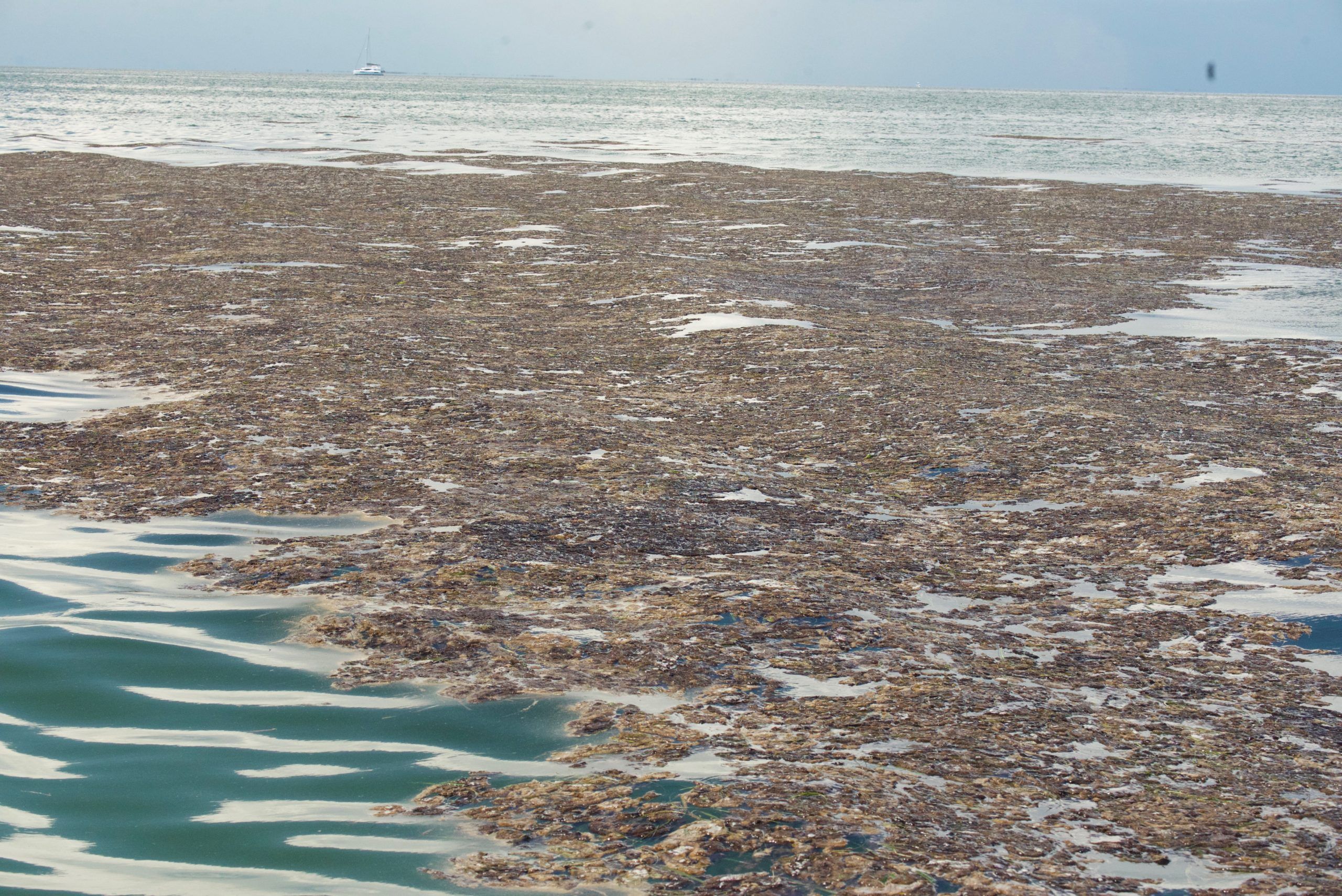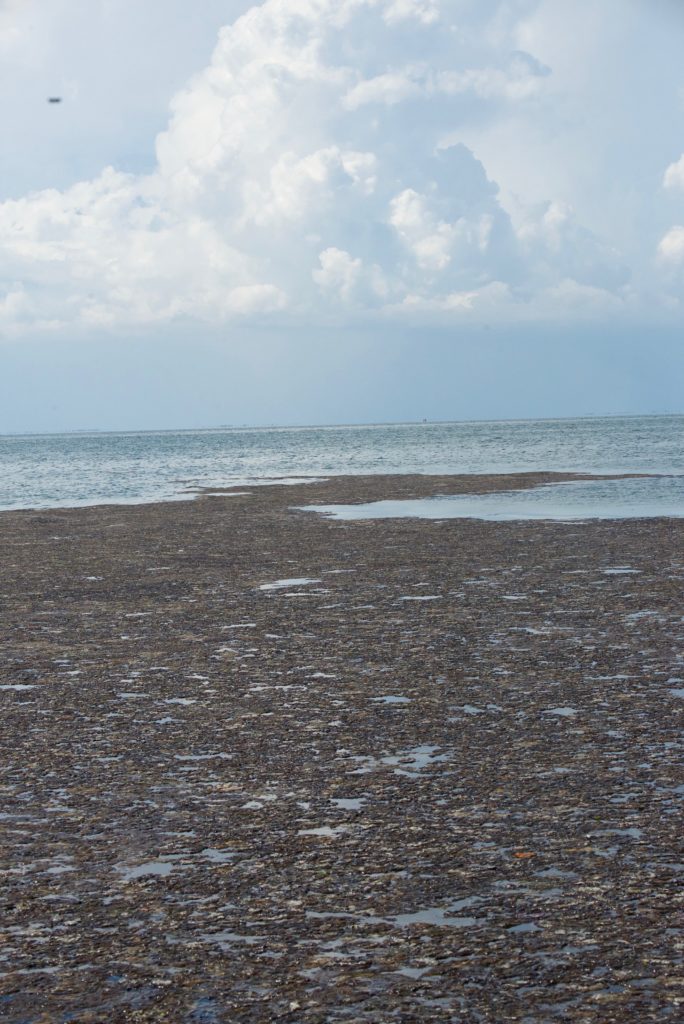What is this slimy sludge in our water? One island resident is on the hunt for clues

This week island resident Gary Martin was out in his boat going around the island, looking for gunk. It’s not an activity that a lot of people partake in, but he is very concerned about the vast amount of floating organic matter in our harbor and backcountry water. Gary had already seen it in the water in front of his island home – patches of what appears to be sludge mixed with collard greens, followed by a disturbing absence of seagrass in the shallow waters right outside of his home. But he wanted to see how far it went and how much there was.
He took Boca Beacon Publisher Dusty Hopkins with him to take photographs. Gary thought they would have to go down to Redfish Pass to see large amounts of the gunk, but they didn’t get that far. They had already seen three huge fields of it before they got anywhere close. They also saw more bald spots in the harbor and Intracoastal where the seagrass was gone.
Martin said he couldn’t give a definitive answer as to what the composition of the “stuff” is; only a biologist could. But it smells terrible and it’s all over the Intracoastal and our inshore waters, and there is some on the Gulf side as well.
“So far, everyone seems oblivious to it,” he said. “There’s no organized effort to deal with it, with the exception of Captains for Clean Water.”
Martin has spoken with representatives of the group who agreed that an island presentation would be a good idea in the fall. It will tentatively be in conjunction with Friends of Boca Grande.

“I’ve been here since 1995 and never seen it this bad,” Martin said. “In the backcountry, because of gradually deteriorating water quality, areas that used to have seagrass beds, it’s all dead. So many things are devoid of any protection given by the grass.”
You don’t have to go far to see what he is talking about, as bits and pieces of it are everywhere in the water.
“It goes from strings that are everywhere, to patches the size of a dinner plate, to solid mats of the stuff that are a couple of inches thick or more and hundreds of yards in width,” Martin said. “It’s all around Useppa and Cabbage Key, down to Sanibel. It’s all the way down the Intracoastal. Casual boaters may not see too much of it if they’re just running the beaches, but in the backcountry it’s prolific and massive.”
Martin said he’s also concerned for the tarpon, particularly at this time of year when they’re spawning. Though it was frustrating enough to have a fly covered with slime every time he cast, he said it’s more concerning to think about the tarpon that haven’t been born yet.
Tarpon spawn offshore and lay eggs. The eggs come in on the incoming tides and deposit on the seagrass and tidal wrack line. The tarpon that hatch from the eggs use the seagrass and other natural foliage as a secure place to grow.
“If they get caught up in this slime instead of the grass, we could lose an entire generation of tarpon,” he said. “It could have a potentially damaging impact.”
He also went back to his original statements regarding the sludge he saw right outside his home. It will all pile up somewhere, he said, and it smells quite vile.
“If you don’t care about the fishing and you don’t care about the boating or the environment, at least care about your property values,” Martin said. Pay attention when you’re out on the water. Take pictures and share them. Talk about it at your cocktail parties. Be concerned, because there is a very big reason to be concerned.”









